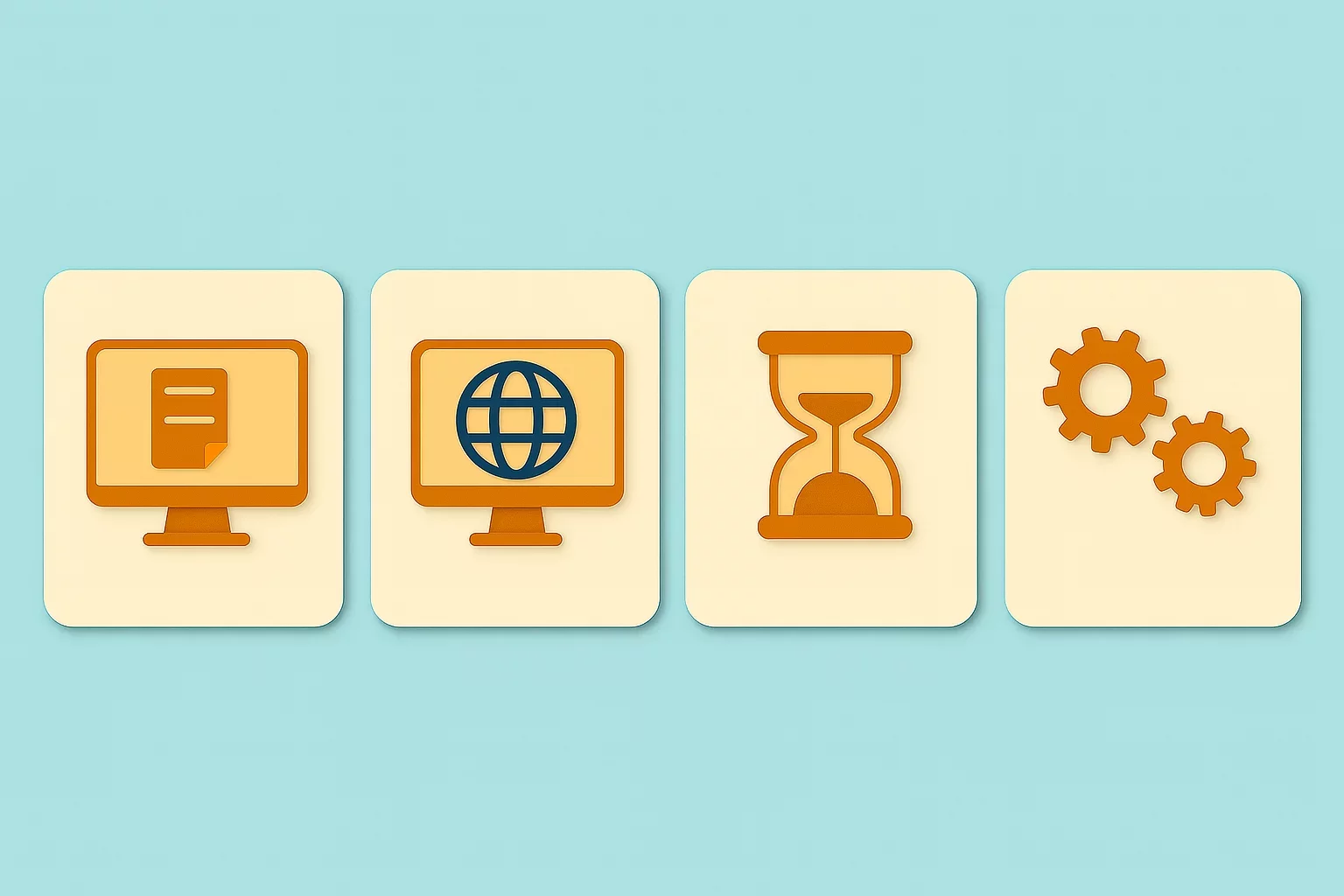Estonia VAT Explained: Rates, Registration Thresholds, and Reporting Requirements

| Standard VAT Rate | Reporting Frequency | VAT Rate for ESS | Digital Reporting | Reporting Currency | |
|---|---|---|---|---|---|
| 24% | Monthly/Quarterly | 24% | Resident | B2G/KMD INF | EUR |
| Non-Resident | KMD INF | ||||
VAT in Estonia - Three Types of Rates
There are three types of VAT rates in Estonia:
Standard VAT rate,
Reduced VAT rates,
Zero VAT rate.
| Estonia VAT Rate | Type | Applicability |
|---|---|---|
| 24% | Standard VAT Rate | Applies to all taxable supplies in the country, besides those that can benefit from reduced rates, zero rates, or be VAT-exempted |
| 13% | Reduced VAT Rate | Applies to accommodation services and accommodation services with breakfast |
| 9% | Reduced VAT Rate | Applies to press publications in any form, medicinal products, books, and educational literature, both on a physical medium and electronically |
| 0% | Zero VAT Rate | Applies to intra-community supply of goods and export of goods to non-EU countries. |
How Much is VAT in Estonia’s Regions?
Estonia VAT law does not impose special or additional VAT Estonia rates in addition to standard, reduced, or zero VAT rates.
VAT Registration Threshold
The VAT legislation and the Tax Authority's interpretations of the main provisions provide valuable information on the VAT threshold in Estonia and its application. The regulations set a VAT registration threshold of EUR 40,000 for established businesses in Estonia. Further inspection of the rules and regulations indicates that there is no VAT registration threshold for non-Estonian businesses.
Regarding the VAT registration threshold for intra-EU distance sales of goods and B2C supplies of services, Estonia, as an EU Member State, implemented a EUR 10,000 threshold into its national legislation. Additionally, Estonia did not define any VAT registration threshold for electronically supplied services by non-EU suppliers.
Estonia implemented the EU-wide SME scheme, which allows small businesses to simplify their VAT obligations. Therefore, businesses with annual sales below EUR 40,000 at the national level can opt out of VAT registration. At the EU level, businesses with total cross-border sales under USD 100,000 can also qualify for VAT exemptions across the EU, as long as they stay below the EU country’s domestic limit.
Types of Taxable Activities in Estonia
Estonia's VAT Laws provide a precise list of activities that are considered taxable. This means that any legal or natural person who performs or provides these activities is regarded as a taxable person for VAT purposes.
Activities that are treated as taxable under the VAT rules include the supply of goods and provision of services for a fee on Estonian territory, the import of goods, the supply of goods or services exempt from tax to which the taxable person has voluntarily added the amount of value-added tax, and the intra-EU acquisition of goods, except those strictly exempted.
VAT Registration Process
The rules related to the VAT registration threshold in Estonia clearly show that domestic and foreign taxable persons face different rules and obligations under the VAT legislation.
Estonia VAT Registration for Domestic Businesses
Once an Estonian business exceeds the EUR 40,000 VAT registration threshold in a calendar year, it must submit the VAT registration form within 3 days. In addition to this mandatory VAT registration, domestic businesses can also voluntarily register for VAT. In that case, those businesses must provide proof of business activity in Estonia or prove otherwise that they are about to commence business in Estonia.
Either way, the registration form must be submitted to the Estonian Tax and Customs Board via email or paper.
Estonia VAT Registration for Foreign Businesses
Unlike domestic businesses, foreign businesses must submit a VAT Estonia registration form in person before engaging in taxable activities. Therefore, applications submitted by other means, such as email, post, fax, or through e-Tax or e-Customs, are not considered.
However, these non-Estonian businesses can complete this process through a tax representative. Moreover, appointing a tax representative is mandatory for non-EU businesses, whereas it is optional for EU-based companies. One exemption from mandatory VAT registration for foreign businesses is when they make zero-rated supplies in Estonia, such as goods supplied through the free zone or a customs warehouse.
VAT Returns in Estonia
All VAT-registered taxable persons, domestic and non-resident, must submit VAT returns by the 20th day of the month following the taxable period. The general rule is that monthly VAT returns are filed electronically, but there are also rules related to quarterly VAT returns. In addition, a paper VAT return may be filed under exceptional circumstances and upon approval by the Tax Authorities.
Penalties for Failure to File Tax Return
Not acting in accordance with the rules set out in VAT law and other related bylaws will undoubtedly result in penalties and fines being imposed on taxable persons. Fines and penalties vary depending on the type of misconduct. Therefore, registering late for VAT may lead to a maximum penalty of EUR 3,200, whereas penalties of up to EUR 2,000 are defined for late submission of a VAT return or late payment. Also, filing an incorrect VAT return may result in a penalty of up to EUR 3,200.
VAT Rules for Electronically Supplied Services
Services delivered automatically over the Internet or a similar network are considered Electronically Supplied Services (ESS) under the EU VAT Directive. However, the definition includes additional elements, such as no human input or minimal human input. Services that are not delivered digitally or that rely heavily on human input are not considered ESS.
Nevertheless, it is essential to note that other terms are related to the ESS. In practice and in the national laws of EU Member States, terms such as digital services, digital products, and electronic services are used. However, all of them refer to the EU-wide definition of ESS.
Taxability Rules for ESS:
E-commerce reform in 2021 altered the taxability rules within the EU single market. These changes raised the EU regulatory framework to a higher level and introduced mandatory VAT registration and reporting rules.
B2B supply of ESS rules left a general rule for determining the place of supply in effect, whereas B2C supply of ESS by non-EU businesses rules defined a destination principle as primarily, meaning that the VAT that must be applied is one of the EU countries where a consumer is located, e.g., VAT rate Estonia.
In 2021, a new EU-wide threshold was introduced for distance sales of goods and ESS. The threshold refers to an annual turnover from all EU sales. Businesses above this threshold must apply VAT rates following the destination principle. Those below the EUR 10,000 limit can either apply the VAT rates of the country in which they are established or use One Stop Shop (OSS) schemes.
How much is VAT in Estonia on ESS?
The Estonia VAT rate for ESS is 24%.
E-Commerce Rules
The 2021 EU E-commerce package represents a pivotal moment in reshaping the e-commerce industry. As the industry evolves and more businesses offer their goods and services to EU consumers, EU government bodies recognize the need to standardize further and harmonize EU-level rules.
These groundbreaking changes introduced special rules for importing low-value goods from third countries or territories, defined as products with a total value of up to EUR 150. Under the newly established rule, digital platforms, as deemed suppliers, became responsible for collecting and remitting VAT when the right conditions are met.
As part of the reform, a 2015 Mini One Stop Shop (MOSS), which paved the way for new rules, was upgraded and adjusted to address new challenges in the digital age. Therefore, the two previously established schemes, known as Union and Non-Union schemes, were further defined, and a new Import One Stop Shop (IOSS) scheme was introduced.
Therefore, the E-Commerce VAT package transformed MOSS into OSS, which consists of the following:
Union Scheme,
Non-Union Scheme,
Import Scheme.
VAT EU Reporting
EC Sales List
Like in other EU countries, Estonia's taxable persons must submit monthly EC Sales List (ESL) returns. The ESL provides additional information on all intra-EU sales made by taxable persons and is an additional monitoring tool. The filing deadline is the same as the standard VAT return, by the 20th day of the month following the reporting period.
Intrastat
As of January 2025, Statistics Estonia removed the arrival declaration after determining that data on goods received from other EU countries are reliable enough to be included in Estonia’s import statistics. As a result, taxable persons no longer need to report arrivals. However, the Intrastat Dispatch declaration remains in place, meaning that taxable persons who dispatched goods worth more than EUR 350,000 to other EU countries in 2024 must continue submitting Intrastat data in 2025, as the statistical threshold remains unchanged.
Digital Reporting
Local Businesses
Except for mandatory B2G e-invoicing rules, Estonia has no other e-invoicing requirements for local taxable persons, such as local businesses. Although not compulsory, companies can send and receive B2B e-invoices with one condition. The buyer must agree to receive an e-invoice.
However, Estonia did introduce an obligation for taxable persons to report VAT transactional data via the KMD INF form, submitted as an appendix to the standard VAT return. The data provided in this form includes transactions subject to standard or reduced VAT rates when the total amount per transaction is at least EUR 1,000 without VAT. This form also contains data on B2B and B2G transactions, sales and purchases, and domestic transactions.
Non-Resident Businesses
Like local ones, non-resident businesses are obligated to submit VAT transactional data via the KMD INF form when filing a standard VAT return.

Featured Insights

The African Tax Response to Fintech and Web3
🕝 January 5, 2026More News from Estonia
Get real-time updates and developments from around the world, keeping you informed and prepared.
-e9lcpxl5nq.webp)





-tfzv42pyms.webp)
